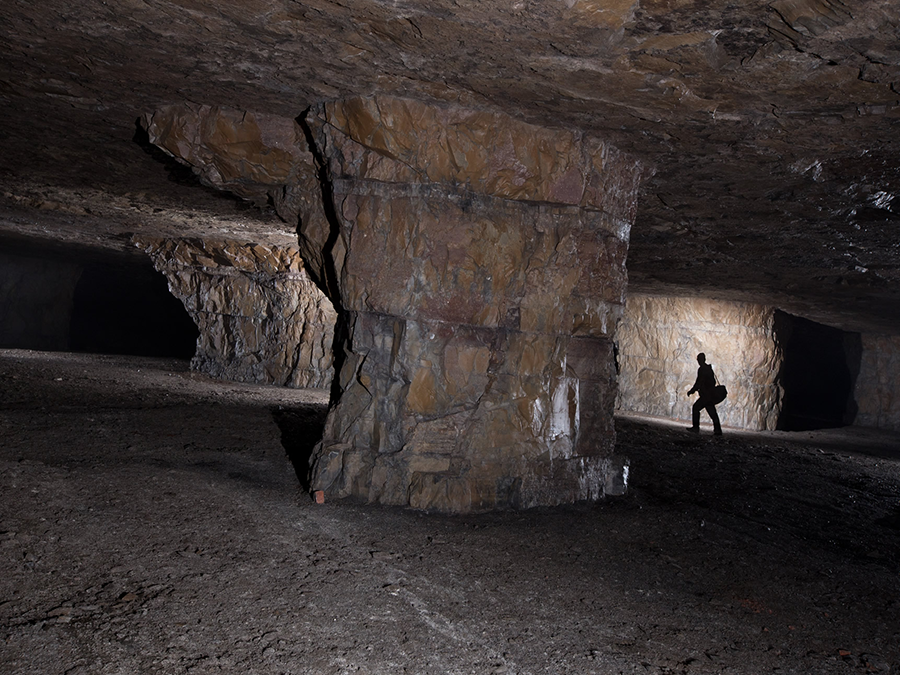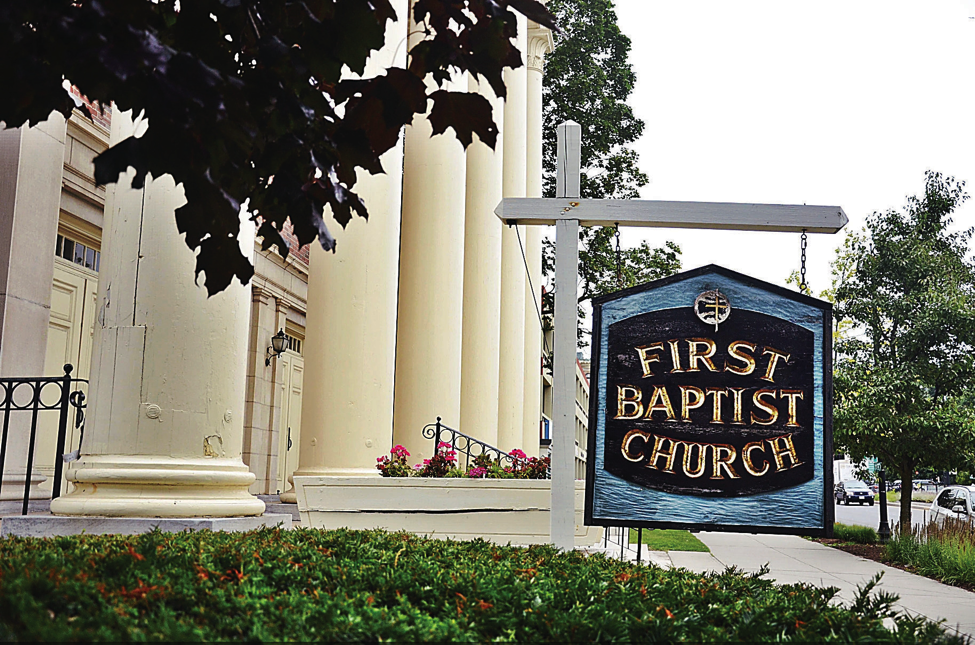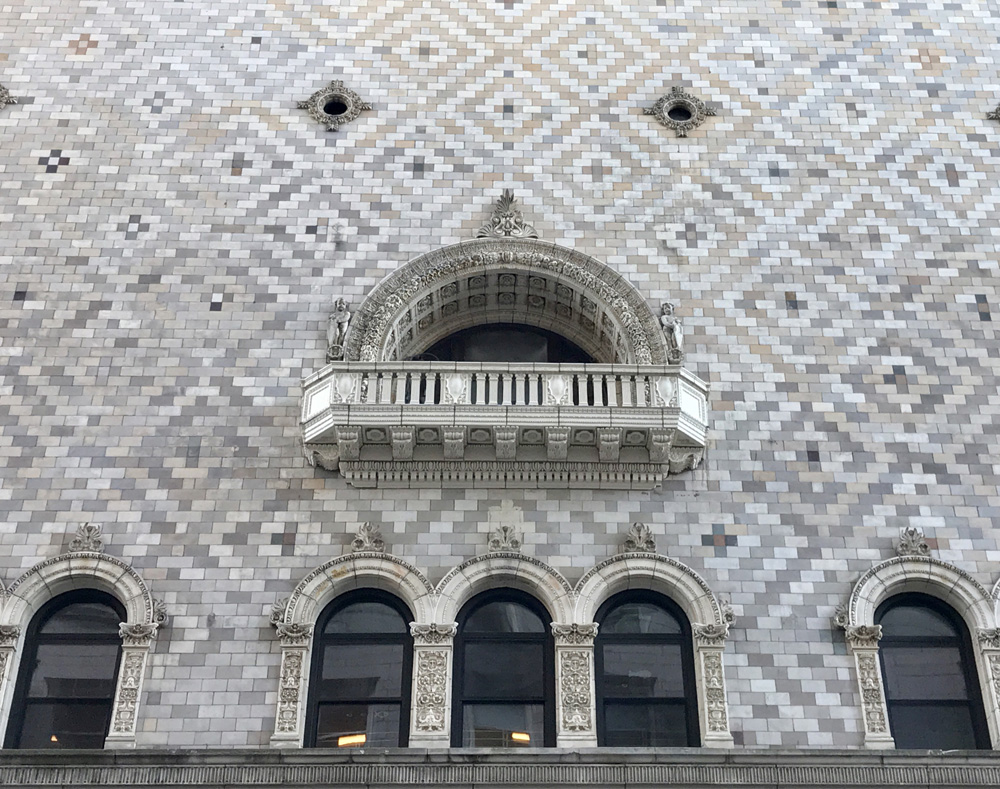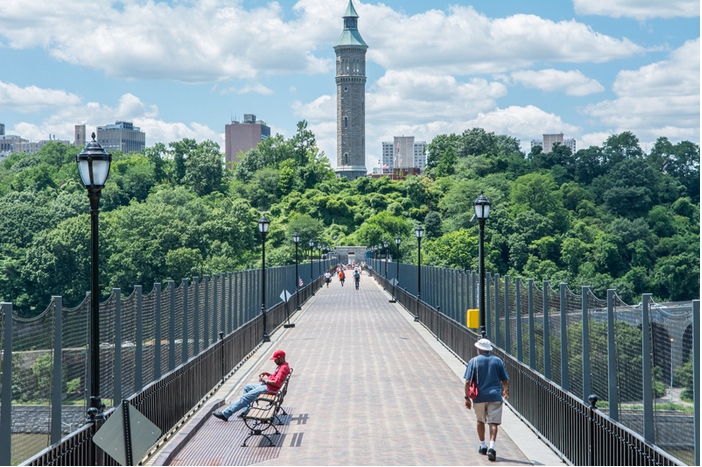
Rediscovered Rock
By Jonathan D. King. Reprinted from Chronogram June 2005.
The caves and smokestacks and giant brick kilns scattered throughout Rosendale are all that remains of an era over a hundred years ago when this little town was a world-famous brand name. The layers of dolomite that produce a durable hydraulic cement were first discovered by engineers working on the Erie Canal in 1818 in western New York. Significant deposits were also found in Rosendale during the excavation of the Delaware & Hudson Canal—by 1827, there were at least four known companies exporting Rosendale cement to the world via the canal. From 1825 to 1900, Ulster County supplied the country with 50 percent of its natural cement needs, most famously for the Brooklyn Bridge, which became a calling card for Rosendale cement. At the height of the boom, Rosendale was choked with companies mining, burning, and grinding the precious rock side by side, producing five million pounds a year. But by 1928 the good times were over for Rosendale, as it was upstaged by Portland cement—a cheaper cement that could be manufactured anywhere.
One of the largest contractors using Rosendale cement was the United States military. In the aftermath of the burning of Washington, DC, during the War of 1812, a set of forts stretching from Maine to Texas was envisioned to provide coastal defense. General Joseph Totten and General Quincy Gilmore of the US Army Corps of Engineers experimented at Fort Adams in Rhode Island and at West Point to determine what materials were ideal for fortifications, especially in wet and salty conditions. The military ended up focusing exclusively on Rosendale cement, and Gillmore wrote in his 1838 A Practical Treatise on Limes and Mortars: “The Rosendale cements are to be depended upon for hydraulic mortars.”
Dietrich Werner, president of the Century House Historical Society and Rosendale town historian, commented on the ubiquity of Rosendale cement as a building material: “Natural cement is how America was built. It’s how New York City was built. That was the mortar that held everything together from 1825 to almost 1900. Portland cement wasn’t even created on a trial basis in the US until 1876, in Pennsylvania, by David Saylor.”
In Rosendale, the last man standing was A.J. Snyder, the owner of the only natural cement company left in the US. Using a blend of Rosendale cement and Portland cement that he manufactured himself, Snyder won many lucrative contracts, such as the New York State Thruway, a huge Nigerian dam, and the runways at JFK (then Idlewilde) airport. After Snyder finally shut the doors on his plant in 1970—Snyder’s former estate is now a museum—there was no natural cement produced in the US commercially for over 30 years. That is, until a few years ago when Rosendale cement was rediscovered in an unusual place—at Fort Jefferson, an abandoned outpost off the coast of Florida in the Dry Tortugas.
Fort Jefferson, conceived as part of the coastal defense system, was never completed. It was used sporadically to garrison troops in the late 19th and early 20th century before being declared a National Monument in 1935 and a National Park in 1992. One hundred and fifty years of exposure to the 23-acre, 16-million-brick fort had taken its toll, however, and in 2004 the National Park Service hired the Atlanta-based firm of Lord, Aeck, and Sargent to begin a six-year, $18-million restoration.
At the American Natural Cement Conference, held at the Hudson Valley Resort in late March, Mary Catherine Martin, lead architect with Lord, Aeck, and Sargent on the Fort Jefferson restoration, gave a presentation about her field research on natural mortars and how she became familiar with Rosendale cement. “The process began with a test piece of the wall and extensive research to determine the nature of the materials used for the original construction…. So I start trying to take a sample for analysis and we discovered that this mortar is incredibly tenacious. One of the workers had a hammer drill and I started pointing out sections that I needed samples from. So after one hour of working on one brick with this hammer drill, he still hadn’t gotten it out, and this guy is screaming at me now. I really started wondering, ‘What is this stuff?'”
Ken Uracius is a gruff, barrel-chested mason with a Boston accent who has been in the restoration business his entire life, with over 20 years spent directing major historic restoration projects. He believes buildings are best restored using the original materials, but in the case of mortars, he found there was no one producing natural cement, and he was constantly addressing the problem of what to substitute. His research led him to the Century House in Rosendale, where he met Dietrich Werner and Kurtis Burmeister, the latter a geologist from U-Cal Bakersfield who was doing a study of the Rosendale strata for his PhD.
While Martin was researching the Fort Jefferson project she began scouring eBay looking for old books about natural mortars and found she kept losing auctions to the same person. When Martin met Ken Uracius, who was working on a restoration of Fort Adams at the time, at another cement conference, she told him the story of the “jerk” who was scooping up all the out-of-print books on natural cement she needed. Uracius stuck out his hand and said, “That’s me.”
Meanwhile, Uracius had obtained some rocks from the area and was trying to make Rosendale cement, studying all of his old texts and manuals while contacting people around the restoration industry. His talk at the Natural Cement Conference kept a room full of people laughing (yes, about cement) for almost an hour as he described experimenting with formulating natural mortars in his garage, which he almost burned down in the process. “It took me about six months, I’d say, just to figure out how to get the material to burn. It was a lot tougher than I expected. I tried coal: didn’t work. So I finally ended up buying a kiln and using electricity.” Uracius eventually got it right and was able to produce small batches of handmade cement. He then started to look for a way to produce it in commercial quantities, which led him to an engineering firm specializing in mortars, Edison Coatings in Plainfield, Connecticut. Uracius and Michael Edison made a deal to start producing Rosendale cement again in limited quantities.
Through Martin, Uracius and Edison were contracted to produce a batch of cement for the test wall at Fort Jefferson. The raw material was obtained from mines in the Rosendale area that were abandoned as soon as they closed. There are still literally tons of the raw rock lying around. Uracius made a deal with Iron Mountain, a company that now stores documents in abandoned cement mines, to empty some of the rubble out of the back of some of the mines on their property, and Edison started experimenting on a large scale.
Edison told me: “I can say that we have produced about 20 tons of material so far. We’ve moved beyond the experimenting phase and are in the early production phase. We are ramping up production to meet the current demands.” The cement will never regain its place as the world standard due to the high cost of production, but thanks to Uracius’s determination, it is once again available, still as indestructible and tenacious as ever, and one of the only boutique cements on the market.
The test wall at Fort Jefferson was completed in the summer of 2004 and was the first use of Rosendale cement in over 30 years. It was deemed a success, and there is now a $18-million restoration project moving forward, depending on Rosendale cement as the hydraulic mortar of choice, as General Gillmore specified back in 1838.







